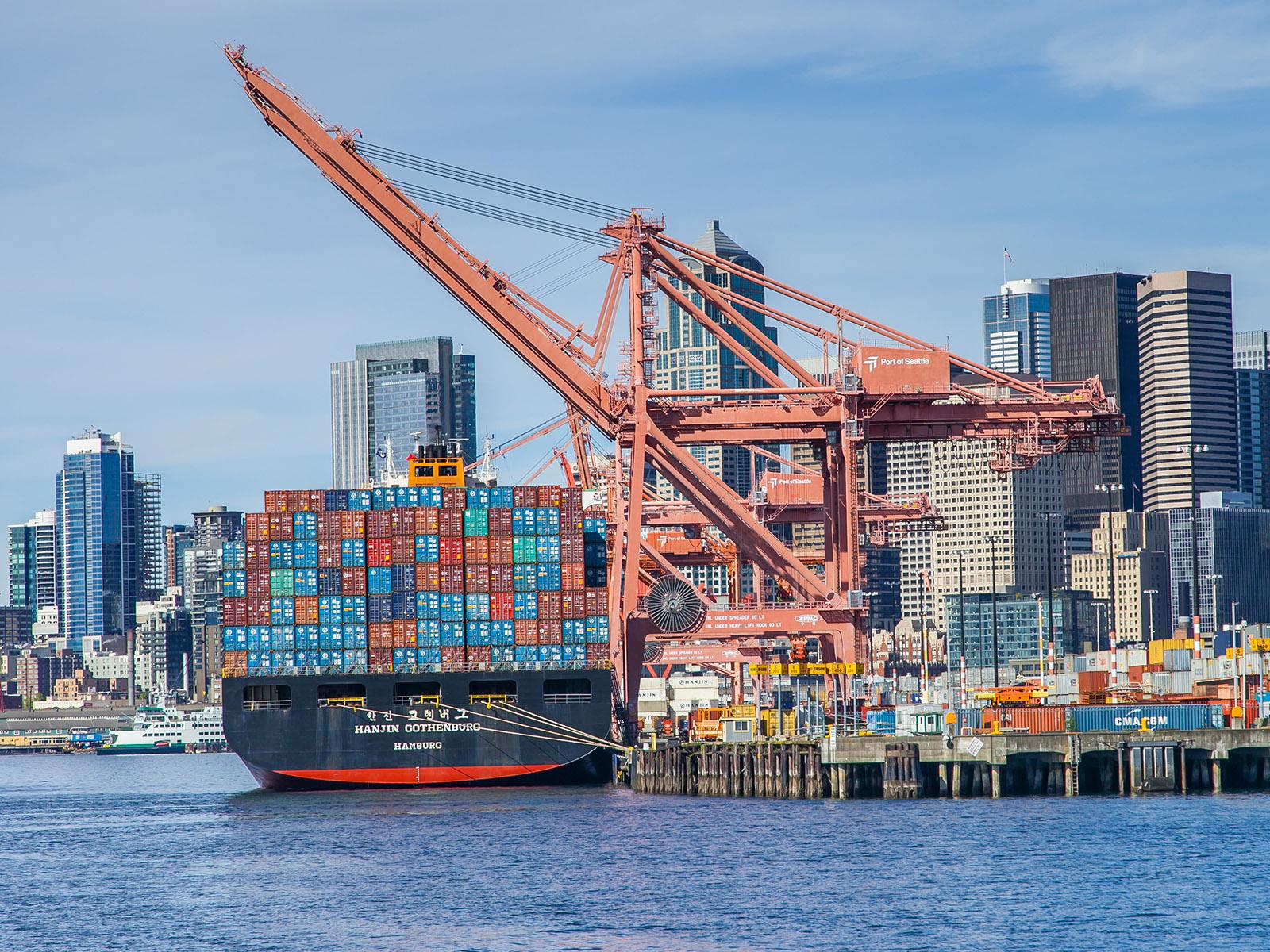New Project Evaluates Long-term Hydrogen Storage Risks in the Emerald City
Two-year project will help inform hydrogen future of Port of Seattle, Seattle City Light

Hydrogen experts at Pacific Northwest National Laboratory are partnering with the Port of Seattle, Seattle City Light, and Sandia National Laboratories to unlock the potential for decarbonization across the metropolitan area.
(Photo: eakkarat rangram | Shutterstock)
Hydrogen experts at Pacific Northwest National Laboratory (PNNL) are partnering with the Port of Seattle, Seattle City Light, and Sandia National Laboratories to unlock the potential for decarbonization across the metropolitan area.
The two-year project, which launched late last year, is a springboard for helping the Port and utility understand the risks of hydrogen in the urban-industrial environment and how to address those risks. The information from the assessment will help provide a strong technical foundation for the safe deployment of clean hydrogen energy in the maritime industry and to the nearly 500,000 homes and businesses across Seattle.
The Port of Seattle case study
The primary goal of the team’s research is to understand the operational requirements for hydrogen at the Port and utility as well as assess the risks for deploying hydrogen at a large scale. Specifically, the team is evaluating hydrogen storage technologies—gaseous or compressed hydrogen storage, liquified hydrogen storage, and liquid organic hydrogen carriers (LOHCs) such as methanol, ammonia, and formic acid. For example, gaseous and liquid storage technologies run the risk of component embrittlement, while compounds in LOHC technologies can be toxic and flammable—all risks that pose safety challenges.
“We are partnering with the Port as the case study for this research,” said Arun Veeramany, the senior scientist who is leading PNNL’s part of the study. “The risk assessment will be useful for understanding how each of the technologies—gaseous storage, liquified storage, and LOHC—will perform while keeping the public and the facilities safe.”
Adds Veeramany, “We consider risk as a ‘triplet,’—what can go wrong, how likely is it to go wrong, and what are the consequences if it goes wrong? Those are the questions we are answering during our assessment.”
The future of hydrogen
Incorporating hydrogen at the Port at a large scale would provide several clean-energy benefits, such as refueling the fleet of medium- and heavy-duty vehicles serving Port facilities, support for next-generation harbor vessels such as tugboats and passenger ferries, or cleaner fuels for ocean-going vessels. It would also bolster resilience for critical operations in the case of an extreme event, such as when major storms knock out power.
“Vehicle refueling, power generation, resilience to the grid—these operational modes and more are being assessed for risks to the grid, both physical and cyber, posed by hydrogen infrastructure development—then, we’ll make recommendations for safety as well as cybersecurity requirements,” said Veeramany.
Finally, the team is using the risk assessment to inform stakeholders, such as the community, fuel providers, and terminal operators, to gain acceptance of long-term hydrogen storage.
“We expect green hydrogen to play a role in our Port’s clean-energy future,” said David Fujimoto, Port of Seattle Senior Environmental Program Manager. “Ports across the globe are looking at how to safely store and use hydrogen and hydrogen carriers like methanol and ammonia. Early coordination and partnership from PNNL and Seattle City Light on safety, infrastructure, and planning will not only deliver sustainability benefits faster, but it importantly centers all of this work in the overall well-being of the communities we serve.”
The project will culminate in two comprehensive reports outlining the findings, one in 2023 and the second in 2024.
The project is supported by the Department of Energy’s (DOE’s) Hydrogen and Fuel Cell Technologies Office and is part of DOE’s Hydrogen Shot launched in June 2021, which aims to reduce the cost of clean hydrogen by 80 percent to $1 per 1 kilogram in 1 decade, or “1 1 1.”
Published: February 24, 2023